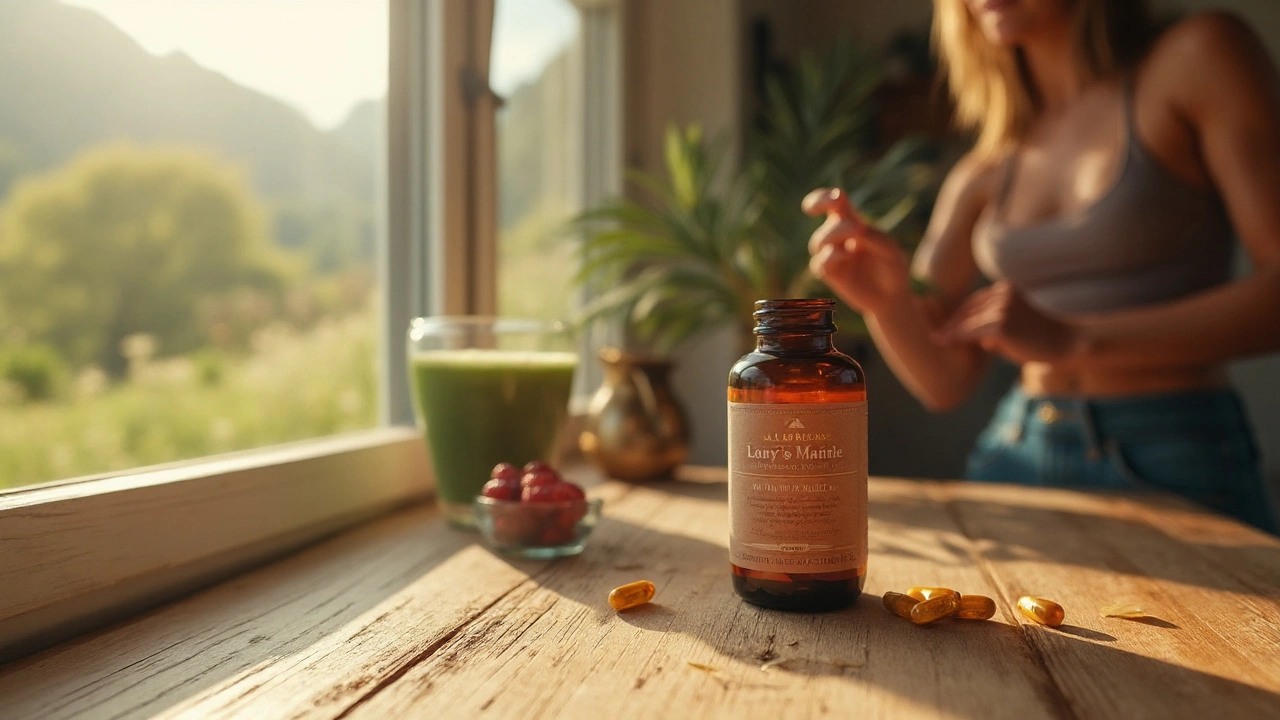Alpine Lady's Mantle – What It Is and Why It Matters
Ever heard of Alpine Lady's Mantle? It’s a wild herb that grows in high‑altitude meadows and has been used for centuries to help with bleeding, skin care, and hormone balance. People today pick it up in teas, tinctures, or capsules hoping for those same benefits. If you’re curious about whether it actually works and how to use it safely, keep reading.
What is Alpine Lady's Mantle?
Alpine Lady's Mantle, scientific name Alchemilla alpina, belongs to the rose family. The plant’s leaves are covered in tiny hairs that give them a silvery look, and those hairs trap a lot of flavonoids and tannins. Those compounds are why herbalists say the herb can tighten capillaries, reduce bruising, and support menstrual health.
Modern research is still catching up, but a few small studies show the herb may lower blood loss during heavy periods and help skin heal faster after minor cuts. The herb is also popular among people who want a natural way to manage mild hormone swings without prescription meds.
How to Use Alpine Lady's Mantle Safely
If you decide to try it, start with a low dose. A common preparation is a tea made from 1‑2 grams of dried leaves steeped in hot water for 10‑15 minutes. Drink one cup a day for a few weeks and see how you feel. For a stronger effect, some people use tinctures at 20‑30 drops diluted in water, but only once daily.
Capsules are another option. Look for products that list the exact amount of dried leaf per capsule—usually 300‑500 mg. Begin with one capsule and only increase after a week if no side effects appear.
Side effects are rare but can include stomach upset or mild diarrhea. Because the herb contains tannins, it might interfere with iron absorption, so avoid taking it on an empty stomach if you’re iron‑deficient. Pregnant or breastfeeding women should skip it unless a doctor says it’s okay.
Interactions with prescription meds are possible. The herb can boost the effect of blood thinners like warfarin, increasing bleeding risk. It may also affect how the liver processes certain drugs, so always check with your pharmacist if you’re on other medication.
Store the dried leaves in a cool, dry place away from direct sunlight. Tincture bottles should stay sealed and out of reach of kids. Proper storage keeps the active compounds stable for up to a year.
Bottom line: Alpine Lady's Mantle can be a handy natural tool for light bleeding issues and skin support, but treat it like any other supplement—start low, watch for reactions, and talk to a health professional if you’re unsure.
Ready to give it a try? Pick a reputable brand, follow the dosing tips above, and keep a simple journal of how you feel. That way you’ll know quickly if it’s helping or if you need to stop.
Alpine Lady's Mantle Supplement: Benefits, Uses & Safety Guide
Discover how Alpine Lady's Mantle works as an adaptogenic dietary supplement, its key phytochemicals, proven health benefits, safe dosage, and how it compares to other botanicals.
About
Nutrition and Supplements
Latest Posts


Genetic Factors in Statin Tolerance: How Pharmacogenomics Testing Can Help
By Marcel Kornblum Nov 28, 2025

Older Adults on SSRIs: How to Prevent Hyponatremia and Falls
By Marcel Kornblum Nov 18, 2025

Medication-Related Liver Damage: Warning Signs and When to Seek Help Immediately
By Marcel Kornblum Dec 12, 2025

